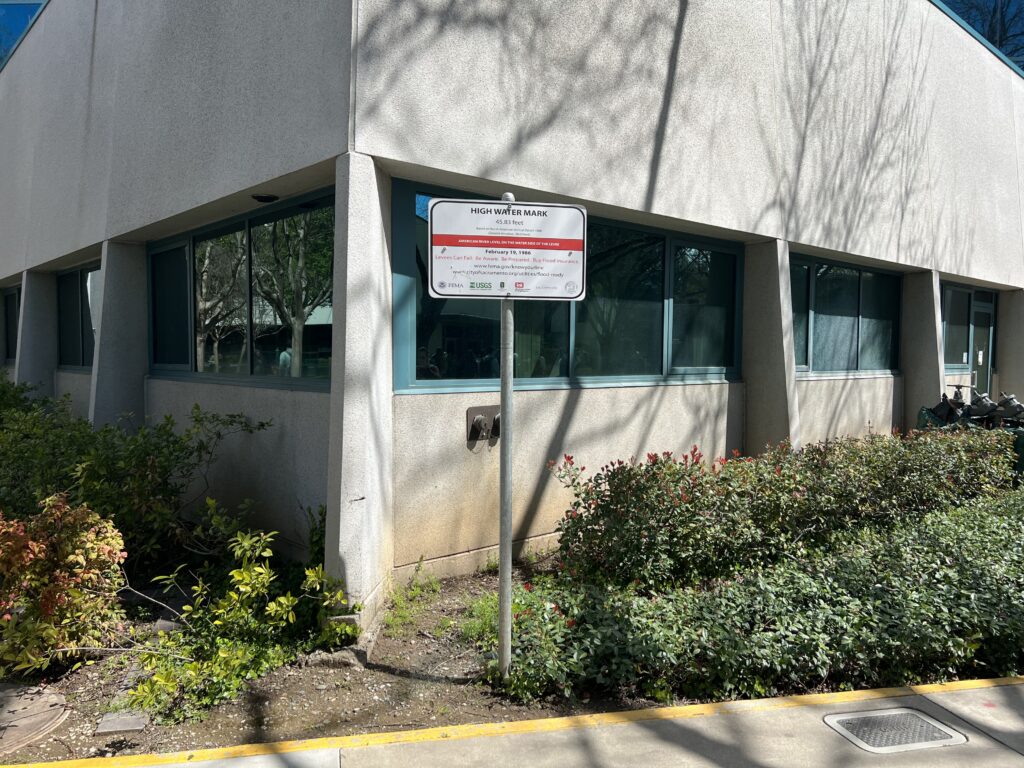
In front of Placer Hall lies what seemingly looks to be an ordinary informatory sign, something most students and other people would otherwise walk by without a glance. However, with a closer inspection this small piece of metal offers a unique piece of the past, and one that recalls one of the wettest times in Sacramento State’s history.
Floods in the Sacramento region are nothing new. After all, there have been numerous recordings of a sudden citywide waterscape since even before the California Gold Rush. However, these were the days before Sacramento State was even conceived. 1986 would prove to be a different story. It was a year that once again floodwaters struck the city, but one in which mother nature would bring her first real test against the university.
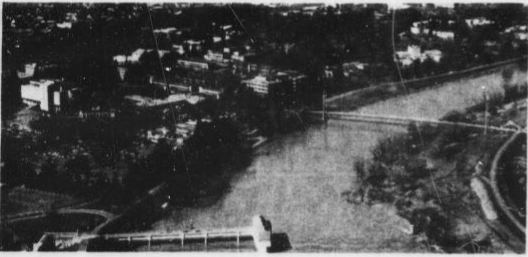
The days from February 12 to the 19th were best categorized by one word: wet. By February 17, the strains of the weather were rearing their heads. Designed to control an estimated 115,000 cubic feet per second (cfs) of water, Folsom Dam was reported to be exceeding its rate limit at about 130,000 cfs.1 Within the university, power failures were beginning to occur at an increasing rate and leaving halls without electricity for several hours. It came to the point that SMUD of the time was no longer capable of fulfilling the university’s electrical needs, and all evening classes for that day were subsequently canceled.2
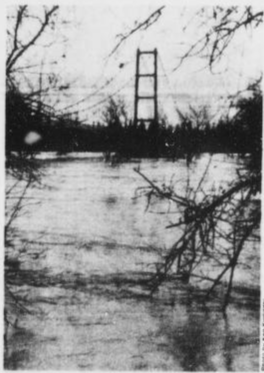
The next day, February 18, would bring about a rough experience for one handicapped individual as the article recalls, “Balancing with one hand on top of the car and the other on top of the open door window, he tries to swing his body into the driver’s seat. He falls to the pavement. It takes him 20 minutes to work his way into the driver’s seat.”3
February 19 would stand as the high-water mark (literally!) as the American River would rise to its apex of 45.83 feet in comparison to the campus’s average elevation of 38.6 feet. Such were the concerns of the onslaught that city officials were in serious consideration of choosing a hair-raising option. To spare further destruction from nearby neighborhoods, there was very real consideration of intentionally breaking the river levee directly adjacent to the campus. Consequently, it would have meant familiar buildings including Lassen and Kadema Hall spending some unwanted time in the drink. Fortunately, Sacramento State avoided this particular fate and continued to operate as best it could with available classes remaining open throughout the week.4

Even as the waters began receding in the coming weeks, Sacramento State refused to sit idle amidst the widespread destruction. If there is one thing the average Hornet student can be touted for in the highest regard, it would be unity. Amongst the citywide cleanup and recovery efforts, university Greek life pitched in with their share of charity. Zeta Phi Beta Sorority orchestrated a large clothing donation to assist flood victims across the city, hosting their program in the main Library Quad on the 20th of March that same year.5 Conversely, the Tau Kappa Epsilon fraternity hosted the “Flood Run ‘86” at Hornet Stadium on April 19. With a minimum required donation of $3, all revenue raised was to contribute to the Flood Relief Fund run by the American Red Cross.6
When all was said and done, the university survived 1986 happily ever after, correct? Not so fast, as subsequent floods in the 1990s and as recent as 2017 have proven time and time again that the American River remains Sacramento State’s natural adversary.
It is vital to note that the lessons of 1986 and subsequent floods in the American River are being addressed. In the current day and age, Sacramento and the university continue in their efforts to always remain one step ahead. As of 2022-23, city revenue has helped to pay for levee upgrades as portions of the levee separating Sacramento State from the American River were rebuilt to both raise height and boost structural integrity. Even over 30 years later, Sacramento State commits itself to remaining vigilant.
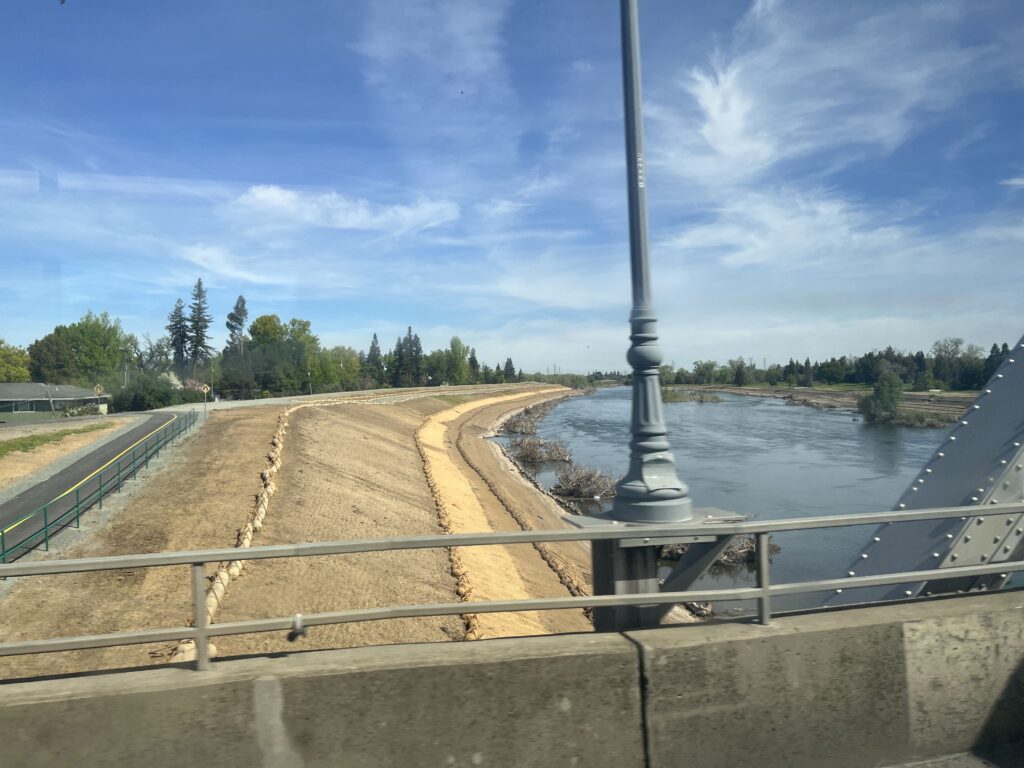
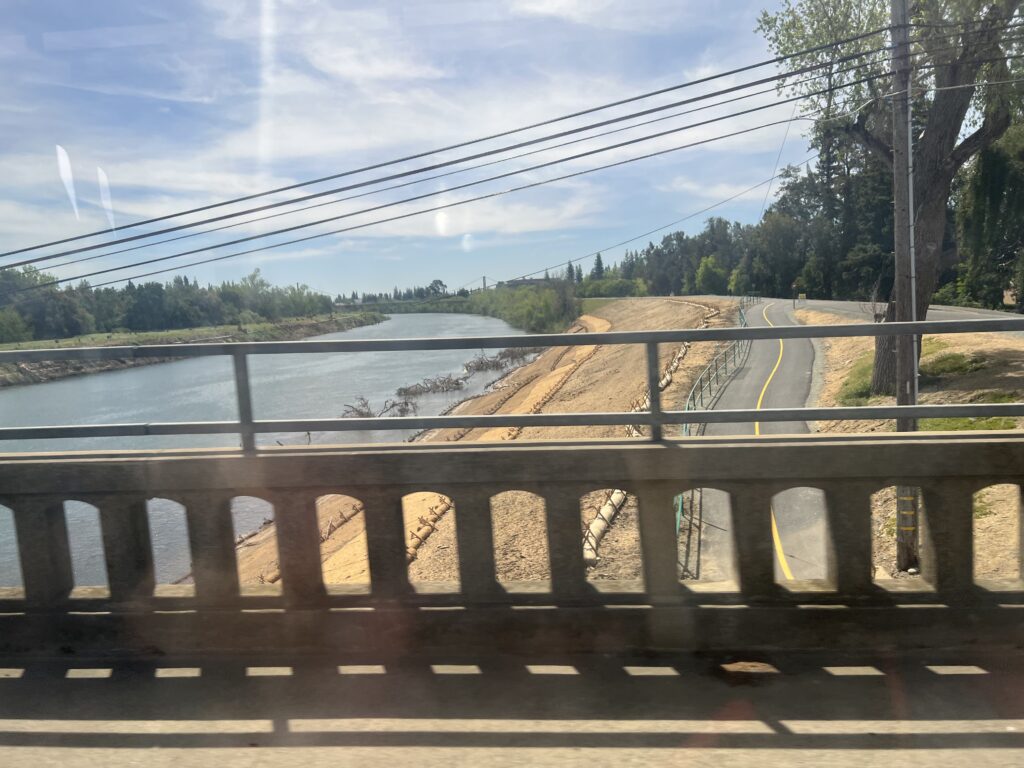
Perhaps in the far future, mother nature will reclaim what has always belonged to her, but for the time being Sacramento State stands high and dry.
Written by Cameron C., Jessica C., and Tyler W.
Notes
1S. F. Inouye, “CSUS Escapes Flood,” The State Hornet 39, no. 19 (February 26, 1986): 1, https://archive.org/details/css_003089/mode/2up.
2S. F. Inouye, “CSUS Escapes Flood,” The State Hornet 39, no. 19 (February 26, 1986): 1, https://archive.org/details/css_003089/mode/2up.
3S. F. Inouye, “CSUS Escapes Flood,” The State Hornet 39, no. 19 (February 26, 1986): 1, https://archive.org/details/css_003089/mode/2up.
4S. F. Inouye, “CSUS Escapes Flood,” The State Hornet 39, no. 19 (February 26, 1986): 8, https://archive.org/details/css_003089/mode/2up.
5“Calendar,” The State Hornet 39, no. 22 (March 19, 1986): 2, https://archive.org/details/css_003092/mode/2up.
6“Calendar,” The State Hornet, 39 no. 24 (April 16, 1986): 8, https://archive.org/details/css_003095/page/n1/mode/2up.
7Mark Finan, “Revisiting the Costliest Storm in NorCal History 30 Years Later,” KCRA Channel 3 Sacramento, February 11, 2016, https://www.kcra.com/article/1986-storms-led-to-flooding-and-destruction/6348067.
Bibliography
Inouye, S.F. “CSUS Escapes Flood.” The State Hornet. February 26, 1986, vol. 39, no. 19, 1-8. https://archive.org/details/css_003089/mode/2up.
“Calendar.” The State Hornet. March 19, 1986, vol. 39, no. 22, 3-3. https://archive.org/details/css_003092/mode/2up.
“Calendar.” The State Hornet. April 16, 1986, vol. 39, no. 24, 3-3. https://archive.org/details/css_003095/page/n1/mode/2up.
Finan, Mark. “Revisiting the Costliest Storm in NorCal History 30 Years Later.” KCRA Channel 3 Sacramento. February 11, 2016. https://www.kcra.com/article/1986-storms-led-to-flooding-and-destruction/6348067.
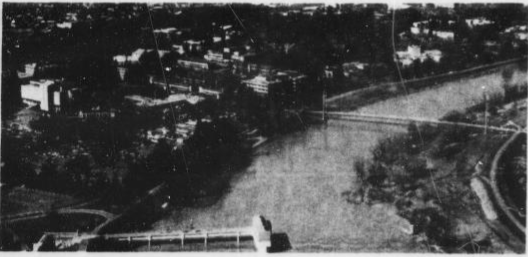
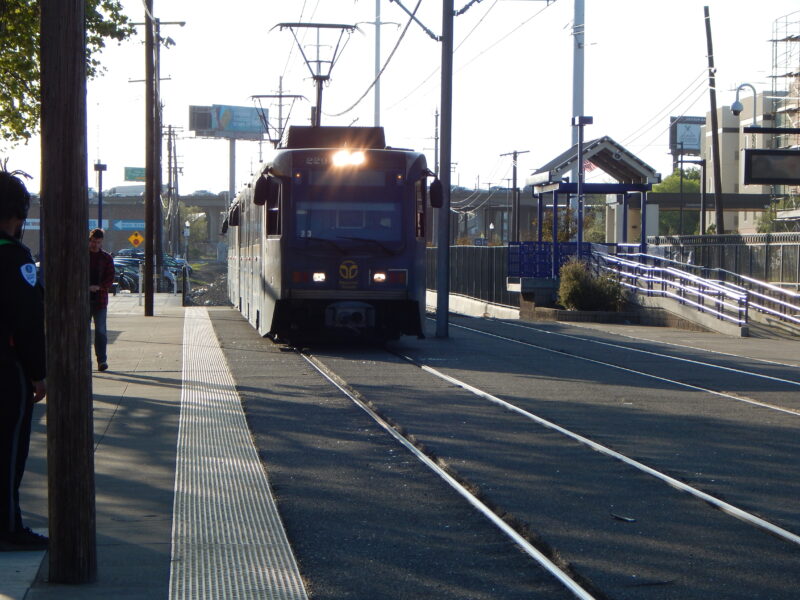
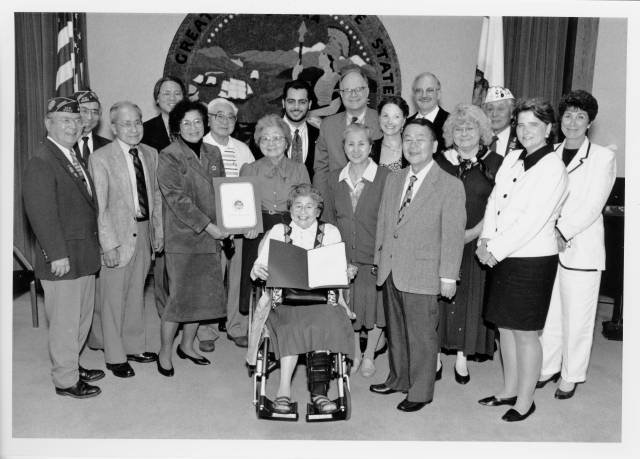
l knew Sacramento was located on a major flood plan prior to reading the article but I didn’t realize how vulnerable sac state was at the time until I read this and started attending the university last year. I’m glad that groups at sac state like the sorority played an active role in providing disaster relief. I’m curious to see how the flooding situation evolves in later years around 2030 and 2040.
It was quite interesting to learn in depth about the land that Sacramento State lays on. I know just from living in the Greater Sacramento area that flooding can become an issue so quickly when the rain does decide to visit us but before reading your article I truly did not know the depth of its’ impact on our university. This is my first year at Sacramento State and I walk past that sign by Placer Hall multiple times a week and never realized what it said so learning about that was interesting. I know the community that has been built at Sacramento State is very supportive so it’s rewarding to see so different groups come together to help during such a difficult time period.